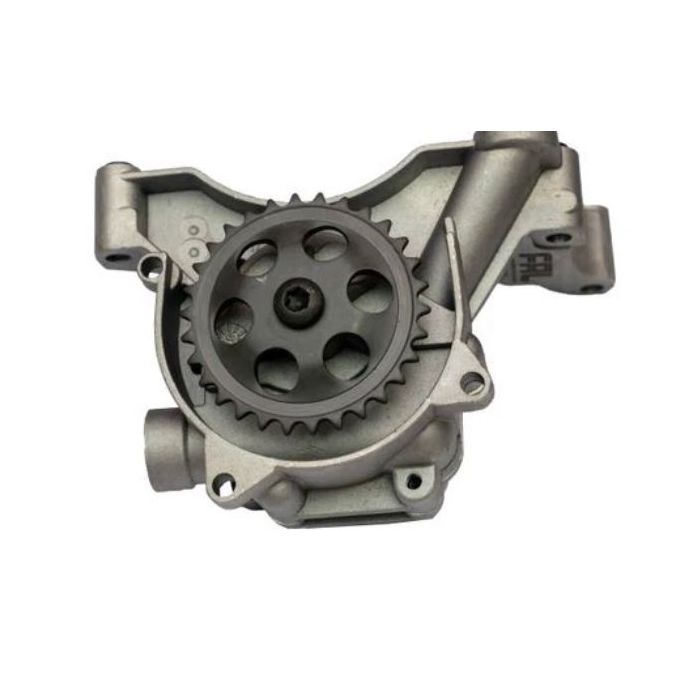Find a high-efficiency clp engine for your equipment.
Find a high-efficiency clp engine for your equipment.
Blog Article
Exactly How a Clp Engine Can Improve Performance in Various Industries
The advent of CLP engines notes a considerable change in functional efficiency across different industries, driven by their capacity to optimize gas intake and minimize downtime. As companies progressively focus on sustainability alongside efficiency, the role of CLP engines ends up being even much more essential.
Review of CLP Engines
CLP engines, or Constant Liquid Propellant engines, represent a significant development in propulsion modern technology, specifically for space applications. These engines use a continuous feed system that permits the continual expulsion of propellant, causing enhanced performance and performance compared to conventional strong or hybrid propulsion systems. By maintaining a consistent flow of liquid propellant, CLP engines can achieve a lot more exact thrust control, which is crucial for navigating spacecraft in numerous goal situations.
The layout of CLP engines incorporates advanced products and innovative fuel administration systems. clp engine. This leads to decreased weight and enhanced reliability, important elements for long-duration room goals. The continuous operation minimizes the risk of combustion instability, an usual obstacle in conventional rocket engines.

Advantages in Production
The manufacturing of Continuous Liquid Propellant (CLP) engines presents several significant advantages that enhance both performance and cost-effectiveness. One of the primary benefits is the structured manufacturing procedure, which decreases the complexity connected with conventional propulsion systems. By utilizing liquid propellant, makers can attain better accuracy in engine performance, causing optimized power result and decreased waste.
In addition, CLP engines facilitate a higher degree of modularity, enabling much easier combination right into different production lines. This adaptability can dramatically decrease preparations and enhance total operational adaptability. Making use of CLP innovation likewise has a tendency to lessen the demand for extensive maintenance as a result of less moving components, which translates into minimized downtime and functional costs.

Applications in Logistics
Leveraging Continuous Liquid Propellant (CLP) engines in logistics offers substantial benefits in functional efficiency and reliability. These engines give a robust option for numerous transportation requirements, making it possible for the smooth activity of items throughout large ranges. The inherent design of CLP engines enables consistent power outcome, which converts into smoother and a lot more predictable transport timetables.
One of the essential applications of CLP engines in logistics remains in sturdy products transport, where they can drive both ground and aerial lorries. Their ability to maintain high efficiency under varying load problems ensures that shipment timelines are fulfilled, consequently improving client contentment. In addition, CLP engines can be incorporated into automated logistics systems, promoting real-time tracking and maximizing course preparation.
Furthermore, the sturdiness of CLP engines lowers maintenance Web Site downtime, enabling logistics companies to optimize their operational capabilities. This is particularly helpful in warehousing procedures, where efficiency in dealing with and transporting products is crucial. As logistics remains to progress, the integration of CLP engines represents a forward-thinking technique that not just enhances performance however additionally supports the sector's expanding needs for integrity and rate.
Effect On Energy Efficiency
Just How do Continual Liquid Propellant (CLP) engines boost energy effectiveness in transportation? CLP engines utilize a consistent flow of liquid gas, enhancing combustion processes and keeping a stable thrust output. This design reduces power losses associated with typical combustion engines, where fuel delivery can vary and lead to ineffectiveness.
The constant procedure of CLP engines permits for a more effective thermal cycle, causing higher certain impulse contrasted to standard engines. clp engine. This converts to lowered fuel usage for the same quantity of job done, dramatically reducing functional costs throughout different transport markets, including air travel and maritime industries
Additionally, the capability of CLP engines to preserve ideal efficiency under varying lots conditions minimizes the requirement for frequent acceleration and deceleration, even more enhancing fuel efficiency. Boosted energy performance not just adds to set you back financial savings yet additionally leads to reduce greenhouse gas emissions, straightening with Going Here international sustainability objectives.
Future Trends and Innovations
Arising advancements in Constant Fluid Propellant (CLP) engine technology assurance to revolutionize the landscape of transport effectiveness and sustainability. As markets pivot towards greener choices, CLP engines stand at the forefront, incorporating innovative materials and layout methods that enhance performance while minimizing environmental effect.
One of the most encouraging fads is the adoption of crossbreed systems that integrate CLP engines with renewable resource resources. This synergy can optimize gas consumption and minimize exhausts, straightening with global sustainability goals. Moreover, improvements in computational liquid characteristics (CFD) are helping with the design of more aerodynamically reliable engines, leading to minimized drag and enhanced gas performance.
In addition, the growth of clever surveillance systems is established to improve operational efficiencies. These systems utilize data analytics and IoT modern technology to optimize engine performance in real-time, making sure that the engines operate within their most efficient specifications.
As study remains to check out alternative propellant formulations-- such as biofuels and synthetic fuels-- the future of CLP engines looks promising. By using these advancements, markets can not only improve their efficiency however likewise add dramatically to a cleaner, a lot more lasting future in transport.
Verdict
In final thought, CLP engines represent a considerable development in performance throughout multiple markets. The combination of sophisticated products and fewer moving parts decreases maintenance needs, while positioning with sustainability directory objectives settings CLP engines as a pivotal modern technology for the future.
Report this page